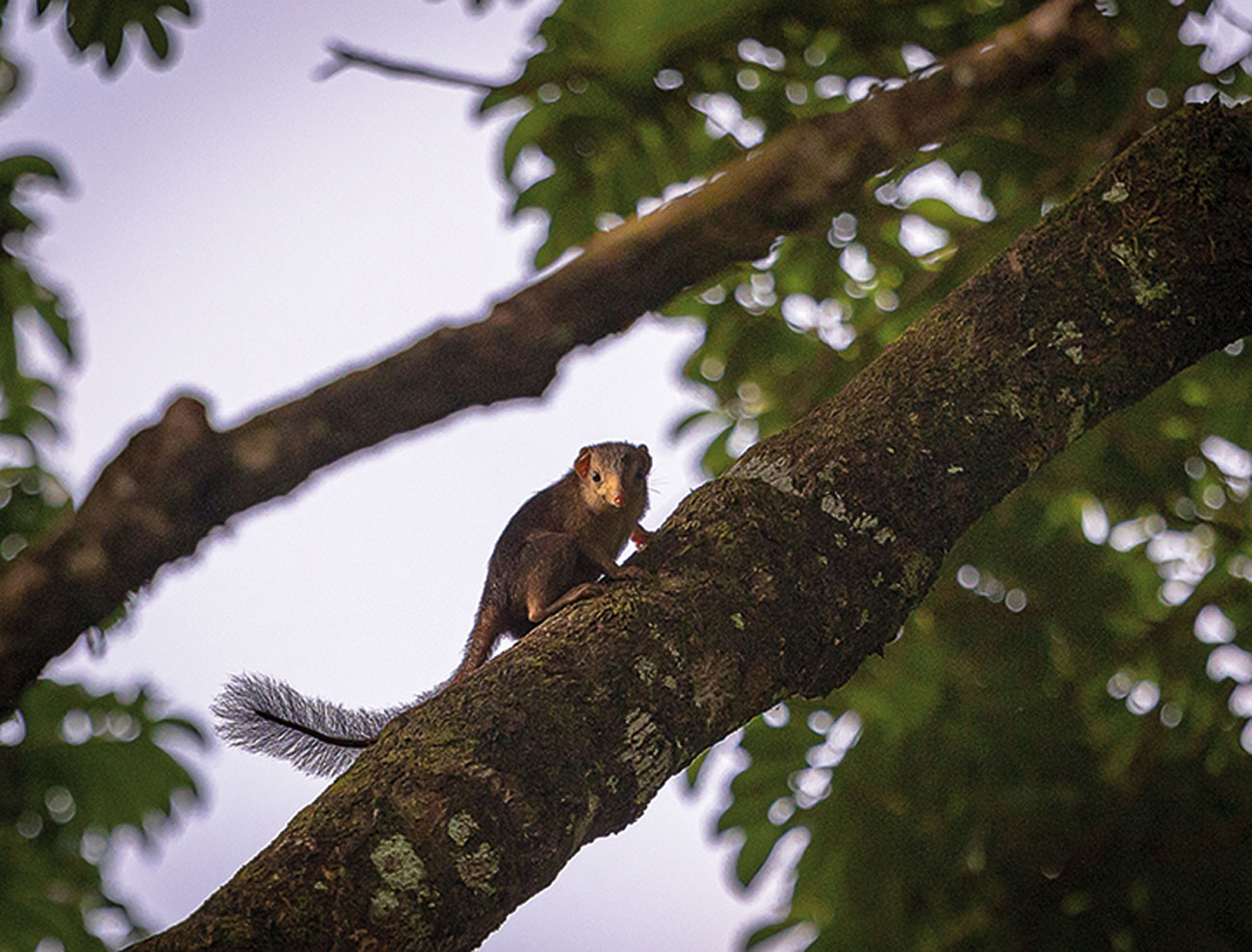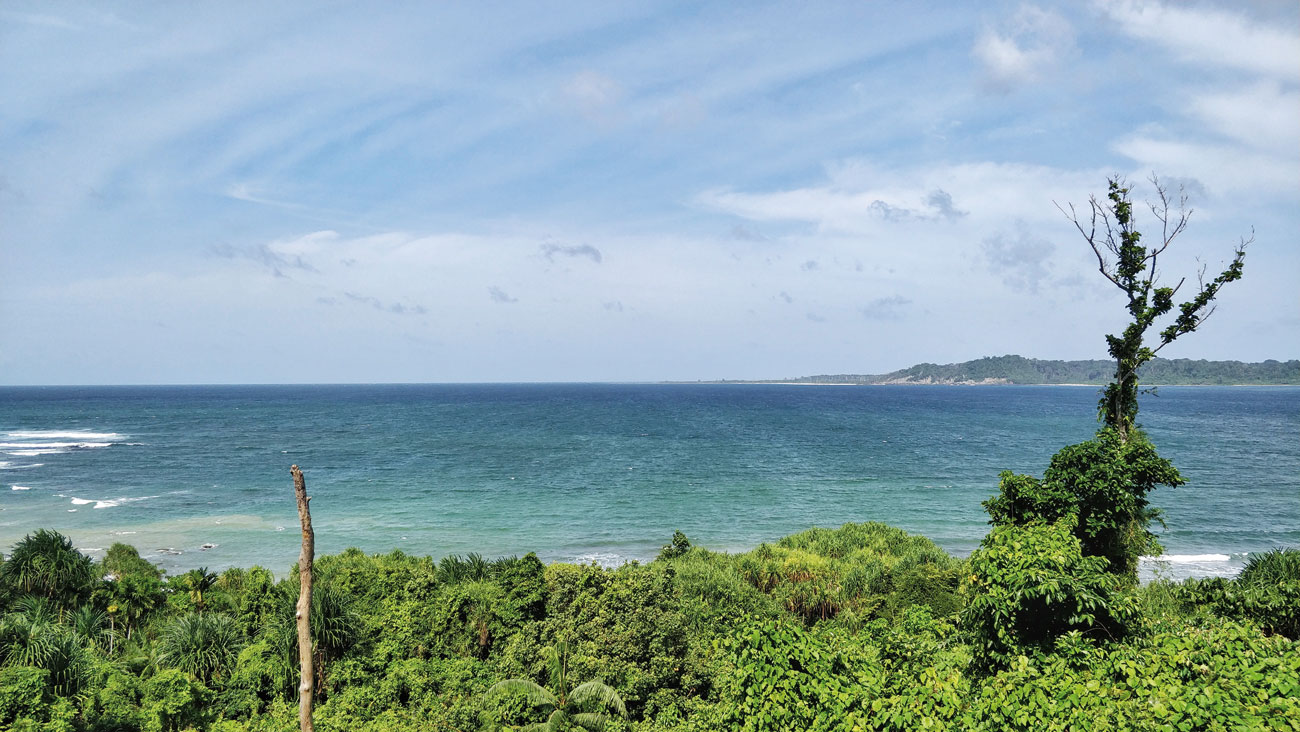Great Nicobar Needs Us Now
First published on
April 03, 2023
By Ishika Ramakrishna
Two months after four species of sea turtles shuffle onto the stretches of Great Nicobar Island’s (GNI) beaches to lay their eggs in carefully thermoregulated, sandy nests, palm-sized hatchlings emerge. These young ones must then brave the sea’s crashing tides and several natural predators such as the White-bellied Sea Eagle, the Great Nicobar Serpent Eagle, domestic dogs and large fish to make it to the open ocean. Those that survive their first journey into the sea, still vulnerable, will battle several natural and human-made obstacles to make it to adulthood.
Sea turtles, including the critically endangered leatherback turtle, often return to the same regions where they were born to lay their eggs. As they foray into the marine world as hatchlings, they form long-lasting memories of their place of birth, and navigate back to these sands to propagate future generations of these rare species. The coastal stretches along Great Nicobar Island have been historically ideal for sea turtle nesting – clean, undisturbed beaches sheltered by mangroves and lagoons, with minimal interference from people.
Twenty years from today, when these hatchlings – who overcame every ecological hurdle to reach maturity – are ready to begin this cycle of reproduction again, what will Great Nicobar have in store for them?

The Great Nicobar Project, which is to be implemented over the next 30 years, will lead to the inevitable destruction of 244 sq. km. of old growth rainforests and coastal forests, and the loss of 10 lakh trees. We stand to endanger and lose endemic species like the Nicobar treeshrew, Nicobar Megapode, and much more. Photo: Gobind Sagar Bhardwaj.
For the last two years, wheels have been turning towards a major Rs. 72,000 crore project on Great Nicobar Island, spearheaded by NITI Aayog and the Andaman and Nicobar Islands Integrated Development Corporation (ANIIDCO). This includes the construction of an international transhipment port, a power plant and associated township area that could be a Special Economic Zone, and an international airport. All these interlinked projects, to be implemented over the next 30 years, together will lead to the inevitable destruction of 244 sq. km. of old growth rainforests and coastal forests, and the loss of 10 lakh trees. Construction of this scale will also place unrealistic demands on the island’s natural resources, requiring an estimated 86,600 kilolitres of water per day, for which surface reservoirs will need to be built. Despite several objections from concerned researchers, conservationists and citizens thus far, including responses to the inadequate Environmental Impact Assessment of 2021, the proposed developmental plans are progressing at a rapid rate.
Great Nicobar Island is an ecological marvel with teeming biodiversity packed into a tiny space of just 910 sq. km. This floating, tropical oasis in the Andaman Sea carries crucial and unique habitats and micro-environments – from mangrove forests and coral reefs, to dense rainforests and agrarian landscapes. Indigenous Shompen and Nicobarese communities have long occupied the island, and share space with settler communities from mainland India who migrated here in the 1960s. The island’s equatorial positioning, climate and biogeography have resulted in a unique assemblage of flora and fauna. Great Nicobar houses the Nicobar long-tailed macaques, Nicobar Megapode, Nicobar treeshrew, Nicobar tree fern, Nicobar Serpent Eagle, Nicobar Sparrowhawk and many more. From their names alone, it is clear that these species are dependent exclusively on Great Nicobar, have evolved over time to inhabit these environments alone, and are found nowhere else in the world.

The Great Nicobar Project, which is to be implemented over the next 30 years, will lead to the inevitable destruction of 244 sq. km. of old growth rainforests and coastal forests, and the loss of 10 lakh trees. We stand to endanger and lose endemic species like the Nicobar treeshrew, Nicobar Megapode, and much more. Photo: Soham Dixit.
The Andaman and Nicobar Forest Department, National Board for Wildlife and the Tribal Welfare Department in the islands allegedly have coordinated their efforts to fast-track these plans. This has involved denotifying expanses of the UNESCO Biosphere Reserve and Galathea National Park to facilitate the looming constructions. If left unchecked, we stand to endanger and lose indigenous tribal communities, several rare and endemic species, neighbouring marine life, vast littoral stretches, sea turtle and megapode nesting habitats and prehistoric rainforests.
Apart from the assured loss of biodiversity and the social implications of an infrastructure project of this magnitude, GNI faces potential hazards from developing a township on seismically volatile land of over 149 sq. km. Sudden alterations to the environment will have catastrophic consequences to the entire island, a phenomenon observed following the devastating tsunami of 2004. Two decades after this calamity, GNI – its people, ecosystems and biodiversity – is still in recovery. We can only imagine what consistent habitat alterations and large-scale disturbances could mean for this indispensable island.
The turtles, megapodes, macaques and people of Great Nicobar need immediate support and long-term conservation. It is time for each one of us to do our part by lending our voices to their plight in a joint effort to prove that it isn’t too late already.
Ishika Ramakrishna is a Doctoral Fellow at the Centre for Wildlife Studies. She first began her work on human-nonhuman primate relationships in Great Nicobar Island during her time at the National Centre for Biological Sciences, and now works in Assam. She is also a podcaster and science communicator with a love for nature education.



